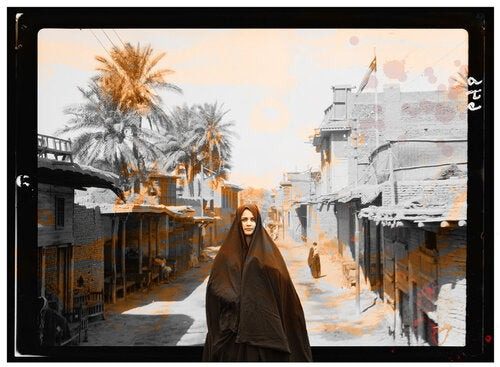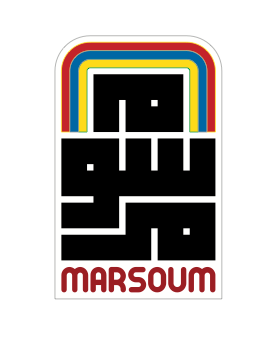
Introducing Qahtan Alameen: The Image Between the Present and the Past
Share
In a guest post visual artist and critic Karim Risan, we introduce you to the world of Qahtan Alameen, where the present and the past come together so seamlessly yet at odds with one another. Qahtan’s latest project “Comfort In Chaos” launches on marosum.co on Nov. 7, 2020.
As he walks the streets, moving from one corner to another, Qahtan Alameen does not hide his passion, or sometimes his obsession, with catching a fleeting moment with his camera or his cell phone camera. Sometimes that fleeting moment yields itself to him as passers-by ... sections of street life … traffic light signs … commercial posters or remnants of them, and many more of life’s throbbing glimpses that make up his daily preoccupation in items, suitable as raw material, for his future art projects.
Finishing his daily urban wanderings, he would go back to his workshop. He begins evoking up the techniques he has learned as a graphic designer, photographer and painter at the same time. The picture or the scene would have the final word in deciding how he should handle his artistic vision and how to finally reproduce it as a complete piece of art. It would have its own artistic qualities. Generally, the world of media and all its transformations and developments has spared him handling a vast number of subjects that normally required much time and effort.
Being a keen researcher in the field of picture as a human relic, he would borrow it out of its archive as a document, or as a part of his personal albums or other possessions, and use it to furnish the place with as a decoration. He would move himself back to a period of time, a certain event, or to some precious collective or personal memory. He would not stop short at bringing back such dear memories as raw material only. Nor to refrain from reconstructing and redesigning them as pictures pointing out to a moment in time or documenting a certain era or incident. He would rather reproduce those imagery moments, adjust them, adapt them and more often deconstruct them to make them fit into too many different reformulations based on modern visual concepts of an artist striving to share something different.
Combining photography, installation and sometimes graphic drawing, what does he want to tell us, or what does he want to draw our attention to as spectators of his works?
When wars and disasters come to an end many of us would implore time to bring back that moment which preceded the catastrophe. We may try to put time on hold in hope of finding some solutions or semi solutions to stop ruin and all kinds of losses that come together with it from happening.
Qahtan Alameen tries to catch fleeting moments that escape the texture of time or get buried deeply inside it. Moments that remind him of happier days of which he got some transient pleasures. Through imitation and monologues he tries to evoke and bring back to life, those evocations and metaphors of the city’s image in which he lived. Its people, its streets and those places in which he spent some of his childhood and boyhood. The fragrant memory of that city is kept intact in his emotional psyche. He does not allow its perfume to escape or dissipate. Such is the picture of the land that embraced the younger years of his life, the land that he left as an immigrant after all these years.
Pictures are synthesized of many parts overlapping each other. Sometimes, Some parts disappear with obscure techniques. Other parts run adjacent to each other and hold a conversation. They tell us a different story that no longer belongs here. It belongs to an impossible time, irrevocable time with irrevocable beings that had a human and social significance. Some of those beings had gone forever. Some still live under the yoke of daily difficulties and the mercy of political and social changes. But both are deeply rooted into the memory of the artist himself.
